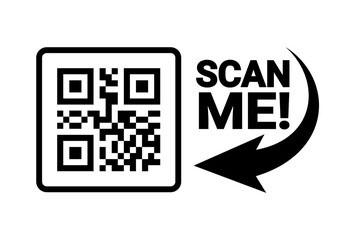
Executive Summary
In 2024, organizations face an escalating cyber threat: quishing attacks that weaponize QR codes for credential theft and data breaches. This comprehensive guide examines the anatomy of quishing attacks, their growing impact, and presents a robust framework for defense.
Understanding the Quishing Threat Landscape
What is Quishing?
Quishing—a portmanteau of “QR code” and “phishing”—represents a sophisticated evolution in social engineering attacks. Unlike traditional phishing that relies on suspicious links, quishing exploits the inherent trust users place in QR codes, which have become ubiquitous in our post-pandemic world for everything from restaurant menus to payment systems.
Anatomy of a Quishing Attack
- Initial Contact: Attackers distribute QR codes through various channels:
- Seemingly legitimate business emails
- PDF attachments mimicking invoices
- Physical mailers or posters
- Compromised digital documents
- Attack Mechanics:
- QR codes redirect to sophisticated phishing sites
- Multiple redirect chains mask malicious endpoints
- Mobile-optimized fake login pages
- Real-time credential harvesting
- Common Lures:
- Package delivery notifications
- Document signing requests
- Conference registration confirmations
- Employee benefit updates
- IT service desk communications
The Growing Quishing Threat
Statistical Evidence
- 150% increase in quishing attacks since 2023
- 60% of attacks target financial services and healthcare sectors
- Average cost per successful quishing breach: $120,000
- 78% of employees report receiving QR code-based communications at work
Why Quishing Succeeds
- Psychological Factors:
- QR codes appear inherently trustworthy
- Mobile scanning creates a sense of immediacy
- Users are conditioned to quick, seamless interactions
- Technical Advantages:
- Traditional URL filtering becomes ineffective
- Mobile devices often lack enterprise security
- QR codes obscure malicious destinations
Building a Comprehensive Defense Strategy
1. Technical Controls
Network Security
- Implement URL filtering at the DNS level
- Deploy SSL inspection for encrypted traffic
- Enable network segmentation for mobile devices
Mobile Device Management (MDM)
- Enforce device encryption
- Implement application allowlisting
- Regular security patches and updates
- Remote wipe capabilities
Authentication Security
- Mandate multi-factor authentication (MFA)
- Implement conditional access policies
- Use biometric verification when possible
- Deploy zero trust network access (ZTNA)
2. Employee Education and Awareness
Training Programs
- Regular security awareness sessions
- Simulated quishing exercises
- Real-world example analysis
- Mobile security best practices
Security Guidelines
- Verify sender authenticity
- Use enterprise QR scanning apps
- Report suspicious communications
- Follow incident response procedures
3. Process and Policy Updates
Security Policies
- Mobile device acceptable use
- BYOD security requirements
- QR code handling procedures
- Incident reporting protocols
Risk Assessment
- Regular security audits
- Threat hunting exercises
- Vulnerability assessments
- Third-party risk evaluation
Advanced Protection Measures
Enterprise Solutions
- Secure QR Scanning Tools:
- Sophos Intercept X Mobile
- Microsoft Defender for Endpoint
- Lookout Mobile Security
- Email Security Platforms:
- Advanced attachment scanning
- QR code detection capabilities
- Real-time URL verification
- Security Information and Event Management (SIEM):
- Behavioral analytics
- Anomaly detection
- Mobile threat defense integration
Future-Proofing Your Defense
Emerging Trends
- AI-powered QR code generation
- Dynamic QR code attacks
- Cross-platform targeting
- Supply chain compromises
Strategic Recommendations
- Invest in mobile-first security
- Adopt zero trust architecture
- Implement continuous monitoring
- Maintain incident response readiness
Conclusion
Quishing represents a significant evolution in social engineering attacks, combining the convenience of QR codes with sophisticated phishing techniques. Organizations must adapt their security posture to address this growing threat through a combination of technical controls, user education, and robust policies.
The key to success lies in building a security culture that recognizes mobile devices as primary attack vectors while maintaining the efficiency and convenience that QR codes provide. By implementing the comprehensive defense strategy outlined in this guide, organizations can significantly reduce their exposure to quishing attacks while enabling secure mobile-first operations.
Key Takeaways
- Implement comprehensive mobile security
- Prioritize user education and awareness
- Deploy advanced scanning technologies
- Maintain regular security assessments
- Foster a security-conscious culture
Remember: Security is a journey, not a destination. Stay informed about emerging threats and continuously evolve your defense strategy to protect your organization in an increasingly mobile-driven world.
